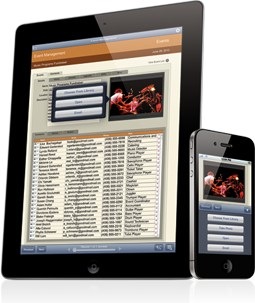

(void)completedReturnToForegroundActive To find out when your app returned to the foreground and finished reauthentication and reconnecting to remote files, use the following app delegate method: For a list of UIApplicationDelegate methods, see the Apple UIKit documentation. You need to implement only the UIApplicationDelegate messages that you want your app delegate to receive. When the app launches, an instance of the class is created to receive the UIApplicationDelegate messages. Then use the applicationDelegateClass option in configFile.txt to specify the name of the class that defines your app delegate. (optional) To add your own app delegate, add the Swift or Objective-C file that includes the app delegate to your project in Xcode. The passwords will be embedded in the app, but obfuscated to make reconstructing them difficult.

Enabling this option causes all solution files to be replaced every time the app is launched. Warning:Set this option to 1 only for testing your app. The following example creates a new project directory called MyAppDir in the user's home directory for the Hello World app and the bundle identifier: appBundleIdentifier: The unique bundle identifier for your app.If the name contains spaces or special characters, enclose the name in quotation marks. The project directory can be anywhere in your file system it doesn't need to be in the iOS App SDK directory. projectPath: The name and location of the project directory for your app.Tip:Drag the folder to the Terminal window to enter the full path of the folder.Įnter the following command at the Terminal prompt: You created the folder in Step 2: Download and open iOS App SDK. Use the cd command to change the directory to the location of the iOSAppSDKPackage_ folder on your Mac. Use iOS App SDK to create the project directory for your app.

All resources for your app are stored in a project directory.


 0 kommentar(er)
0 kommentar(er)
